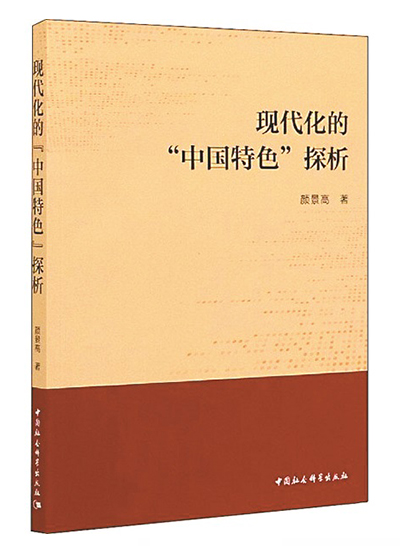Exploring new and uniquely Chinese path to modernization

The “Chinese Characteristics” of Modernization
The “Chinese Characteristics” of Modernization, written by Yan Jinggao, an associate research fellow from the Institute of Philosophy at Shandong Academy of Social Sciences, looks into China’s modern transformation.
The book probes deeply into the new and uniquely Chinese path to modernization, revealing the prominent institutional advantages of Chinese modernization compared to capitalist modernization. Additionally, it interprets the core socialist values, the Belt and Road initiative, and the community of shared future for mankind from a practical level.
It examines the development mechanism for completing the building of a moderately prosperous society in all respects. China has made world-renowned development achievements, steadily increasing the income level of the people amid the historical process of building a moderately prosperous society in all respects. The eastern region, which has a high degree of marketization, has already taken the lead in poverty alleviation. Urban agglomeration areas have also seen a general rise in wealth. Unprecedentedly, the central and western regions and remote rural areas with low marketization have eradicated absolute poverty. China has achieved remarkable results of poverty reduction, and won an overall victory in the fight against poverty.
The book looks at the coordination mechanism for common prosperity. Geographical advantages of coastal locations have been fully exploited to promote the eastern region to take the lead as an “experimental zone” and “window to the outside world.” From special economic zones, open coastal cities, and open coastal economic zones, to cities along rivers, inland provincial capital cities, border cities, and ports, a model of all-round, multi-level, and wide-ranging opening up has gradually taken shape. National strategies concerning the large-scale development of the western region, the revitalization of old industrial bases in northeast China, and the rise of the central region have been successively implemented to bring the central and western regions and old industrial bases new growth poles for economic development.
The book touches upon China’s wealth distribution mechanism for shared development. The principle of socialist distribution with Chinese characteristics has been gradually improved in practice, transitioning from distribution according to work to the combination of distribution according to work and distribution according to production factors, and to the establishment of distribution according to work as the main form and the coexistence of multiple distribution methods. The government makes earnest efforts to perform its redistribution functions, accelerate the equalization of basic public services, and narrow the gap in wealth and income distribution, ensuring that the fruits of reform and opening up benefit everyone more equitably.
Sun Juyou is a research fellow from the Institute of Philosophy at Shandong Academy of Social Sciences.
Edited by YANG LANLAN
